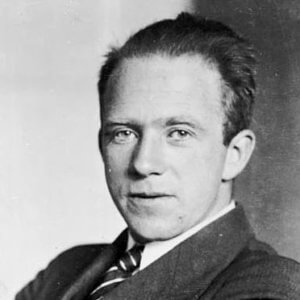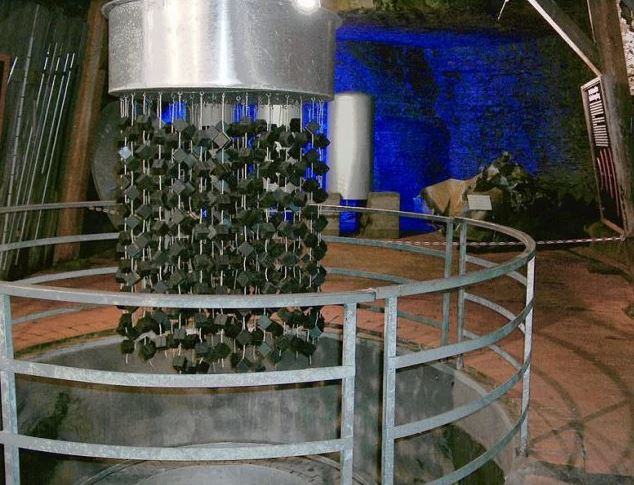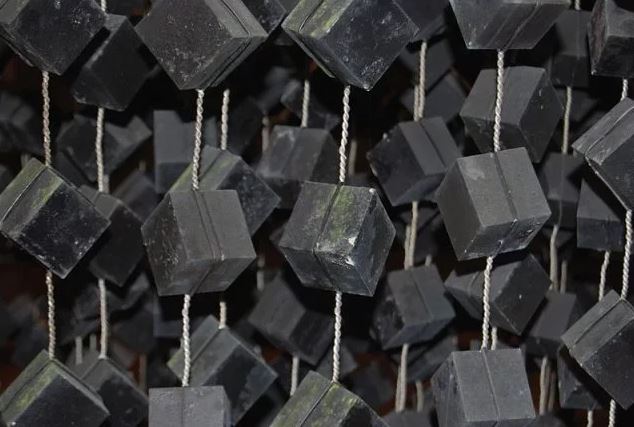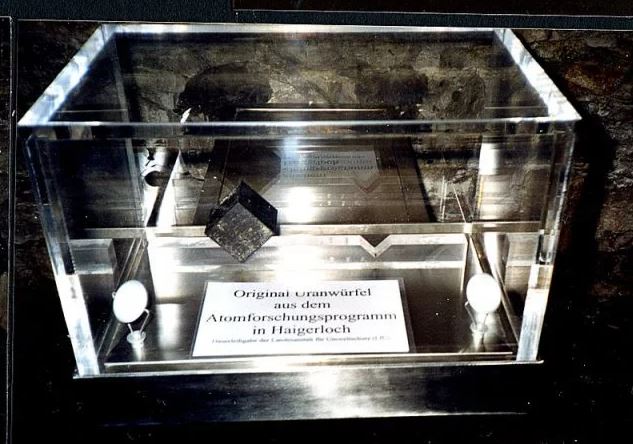 6
6




 03. 04. 2020
03. 04. 2020

One of the things that fortunately Nazi Germany could not handle was the development of a nuclear weapon - although it was trying hard, and the dice that resulted from the experiments of that time still exist. Hitler demanded from his scientists to master nuclear power, but fortunately they failed. Still, they were very close to experimenting with hundreds of cubes grouped in a chandelier, reports Daily Mail. Reactor B-VIII, developed by German physicists and scientists, was a project led by leading Nazi physicist Werner Heisenberg, captured by the Allies at the end of the war in 1945.

Werner Heisenberg. Bundesarchiv, Image 183-R57262 / Unknown / CC-BY-SA 3.0
It is Heisenberg who is credited with discovering and naming the discipline of quantum mechanics. The Germans had a very well hidden laboratory under the castle church in the town of Haigerloch, located in the southwest of the country. Today, this place is called the Atomkeller (Atom Cellar) Museum. The museum is open for public tours and is visited mainly by those who are interested in the efforts of wartime Germany dedicated to the development of nuclear technology. The original core of the reactor consisted of 664 uranium cubes, interconnected by cables used in the manufacture of aircraft.

Replica of a cube nuclear reactor in a museum
Due to the hierarchy of the nuclear research division, the Nazis were not able to put enough cubes in one place to build a functioning nuclear reactor. However, US researchers have realized that there may still be hundreds of these cubes on the black market around the world. One of them was received in a mysterious way, worthy of John le Carre's spy novel, six years ago by an American scientist from an anonymous donor.

Replicas of uranium cubes in the Haigerloch Museum. Photo: Felix König CC from 3.0
Timothy Koeth is a researcher at the University of Maryland. In 2013, a cube arrived at his office with an unsigned note: “It comes from a nuclear reactor that tried to build Hitler. A gift from Ninninger. “This led Koeth and his team to documents proving that the Nazis had enough nuclear cubes to complete the reactor during the war, but these were scattered throughout Germany. Most current experts do not believe that the remaining cubes are likely to survive the post-war decades; But American scientists are looking for them for sure.

Original uranium cube from the German experimental nuclear program in Haigerloch. Photo by Vitold Muratov CC from SA-3.0
EurekAlert quoted Koeth as saying: "This experiment was their last and closest attempt to successfully build a self-sufficient nuclear reactor, but there was not enough uranium in the nucleus to achieve this goal." He explains that . Even the delivery of the missing 400 cubes would not be enough. The reactor core was placed in a graphite shell, which was placed in a concrete water tank. Water was supposed to help regulate the rate of a nuclear reaction.
Incorrect calculations were not the only problem the Germans faced. According to Koethe's colleague Miriam Hiebert, unhealthy competition and competitiveness also contributed to the cessation of the Nazi project. Hiebert told the American Institute of Physics: "If the Germans, instead of dividing them into separate competing divisions, concentrated their resources in one place, they could be able to build a functional nuclear reactor."
This approach, she said, was used with great success by the Americans in the Manhattan Project. "The German program was fragmented and competitive," she explained, "while under the leadership of General Leslie Groves, the Manhattan Project was based on centralization and cooperation."
This inability to cooperate ultimately cost Germany so dearly in the race to build a nuclear reactor. Koeth notes that although Germany was the cradle of nuclear physics and began the idea a few years ahead of the United States, the Germans had very little chance of success.
This fact was, of course, in line with the wishes of the Allies and for the benefit of the whole world. It is almost impossible to estimate what the outcome of the war would be if the Nazis managed to use nuclear technology.